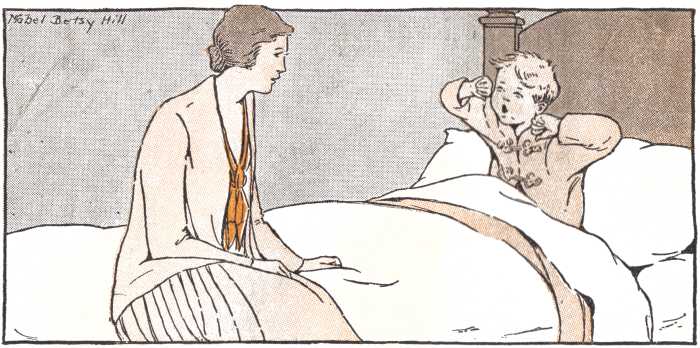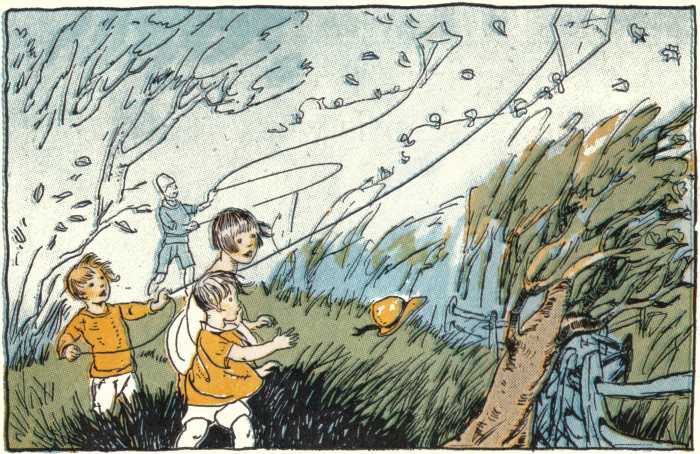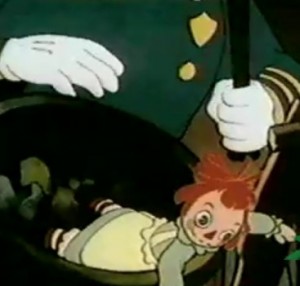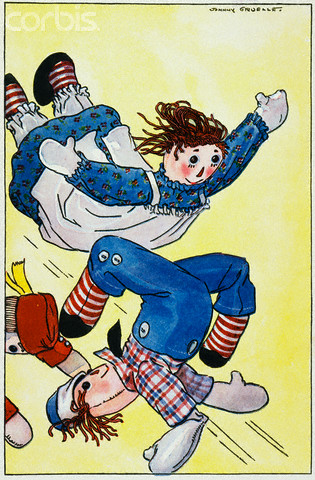Minneapolis-St. Paul’s KARE-TV on CPSIA’s ban on kids’ dirtbikes and ATVs. Related news story here, and earlier here, here, etc.
Posts Tagged ‘CPSIA’
Snopes and CPSIA
How wrong — and how seemingly unembarrassed about being wrong — is the popular urban-legends site? After I raised the question on Friday, reader Meredith Wright wrote the site and got a highly unsatisfactory response, which I’ll reprint here (and have also printed in comments):
Comment (MW): First of all, I LOVE your website, and usually find it well-sourced. But your inboxer article on CPSIA is just incorrect. CPSIA is a poorly written law (and apparently a poorly READ law – most of the representatives and senators who voted for it never bothered to read it – kind of like the PATRIOT Act), but it IS going to impact a LOT of people who shouldn’t have to suffer, mostly small business owners and LIBRARIES.
Go to Overlawyered.com and check it all out. I have no ax to grind here
(although my representative is Waxman, one of the morons who wrote this stupid bill) and just want you to take a look at the other side of the
issue. At the very least, your article should be labeled “undetermined” not “false.”Kind regards,
Meredith Wright
And the response:
From: snopes.com [email redacted]
Subject: Re: snopes.com: Page Comment
To: Meredith Wright [email redacted]
Date: Friday, February 13, 2009, 6:43 PMIt’s covered in our FAQ at http://www.snopes.com/info/faq.asp
Many of the texts we discuss contain a mixture of truth, falsity, and exaggeration which cannot be accurately described by a single “True” or “False” rating. Therefore, an item’s status is generally based upon the single most important aspect of the text under discussion, which is summarized in the statement made after the “Claim:” heading at the top of the page. It is important to make note of the wording of that claim, since that is the statement to which the status applies.
Urban Legends Reference Pages
http://www.snopes.com
* * *
So [this is W.O., editorializing, now, not Snopes or Wright] it doesn’t matter how often people read the Snopes item and conclude that the alarms over resellers and CPSIA are unfounded, hysteria, far-fetched, etc. The posting was narrowly accurate when it came to refuting one particular false sub-rumor, and so there’s no need to apologize for, let alone correct, the dismissive tone and poorly informed opinionizing on prospects for enforcement that led many readers into a wider and more serious error, namely thinking that children’s resellers who don’t “blatantly take a cavalier attitude” about customer safety would have no trouble living with the law’s requirements. If you believed Snopes on that, you would have been grossly unprepared for the convulsions in the children’s resale business that began making headlines in recent days.
Incidentally, for those keeping score, the Snopes entry gets other facts about the law wrong too. For example, it announces that “children’s products made after [emphasis added] February 10, 2009″ face lead certification requirements. This was not true either before or after the CPSC’s 11th-hour stay of certification enforcement: it was and is the date of sale or distribution, not of manufacture, that triggers the requirements. A small maker or dealer relying on the Snopes piece might have concluded that its pre-2/10 stocks were not affected by the certification controversy — big, big mistake.
(Public domain image: Grandma’s Graphics, Margaret Tulloch).

CPSIA: “Books, left out at the curb…”

Cecilia Leibovitz in our comments section:
Today I noticed a small box of books that had been left out at the curb of a thrift shop here in Vermont. All but two were children’s books printed prior to 1985.
Feel free in comments to add your sightings, positive or negative, of what is happening in the world of kids’ resale. (More: Bookseller Nora O’Neill took six boxes’ worth of kids’ books off the shelves in her store, retail value $2,500, and is not happy about that: “Yes, Alexander, it is a Terrible, Horrible, No Good, Very Bad Day.” She also has an earlier post).
Some reactions to my coverage of the threat to pre-1985 kids’ books, both at this site and in my new opinion piece at City Journal: famed sci-fi writer Jerry Pournelle (scroll to Feb. 12), Justin Taylor/Between Two Worlds, Series Books for Girls, Liberty Maven/DownsizeDC, Melissa Wiley, The Catholic Bubble, Carter Wood/ShopFloor, and Ella’s Deli. I also got a very nice note from Michael S. Hart, founder of old-text-preservation volunteer group Project Gutenberg, one of my favorite things about the Internet. And if you haven’t read Mark Bennett’s post at Defending People, linked earlier, go do so. (More: Dilettante’s Dilemma, Jeff Sypeck (test, toss, or evade?), Todd Seavey, International House of Bacon (“Again — the single worst piece of regulation in my lifetime”)).
Adapting a theme taken up by Deputy Headmistress, Love2Learn Blog has started a meme of “My Five Favorite Endangered Books” at risk of disappearing from the market under CPSIA. She makes the important point that even when pre-1985 children’s literature remains available in post-1985 reprint editions, the physical quality is often not the same: in many cases binding and paper quality is lesser, color illustrations missing or shrunken or rendered only in black and white, all of which can rob the works of their original magic. Wikipedia’s “Illustration” article is worth a look. Commenters at Common Room also suggest one group of public figures who might be prevailed upon to speak out against what the law is doing: namely, living authors of pre-1985 (and out-of-print/oop) kids’ books. It’s a group that would include some fairly big names and might get noticed in the press.
Public domain graphic: Grandma’s Graphics, Mabel Betsy Hill.
CPSIA chronicles, February 13

- I’ve got a new opinion piece just up at City Journal on the pressure on thrift stores, inexpensive used-book dealers and other resellers to trash most of their stocks of pre-1985 children’s literature. Some of the ground it covers will be familiar to those who read Tuesday’s post at this site, as well as yesterday’s mention of CPSC commissioner Thomas Moore’s call last week (PDF) for some undefinedly large share of pre-1985 books to be “sequestered” until more is known about their dangers.
-
Several bloggers have pointed to this post at Semicolon Blog which reminds us that many post-1985 children’s books are also at risk of destruction, in particular those enhanced with decorative or amusement-providing elements in materials other than paper:
My daughter works in a used bookstore. TODAY they pulled all the books from the children’s section that had any kind of metal or plastic or toy-like attachment, spiral bindings, balls or things attached, board books, anything that might be targeted under this law, and they very quietly trashed them all. I say “very quietly” because the bookstore had a meeting with employees and told them to be careful not to start a panic. If anyone asked what they were doing they were told to say that they were “rearranging their inventory.” No one was allowed to tell anyone about the new law, and no one was allowed to take any of the doomed-for-destruction books home or give them away.
It should be noted that completely plain board books would be probably considered “ordinary” and thus safe to resell under the CPSC’s guidelines so long as they contain no special texturized elements such as rubber, foil, nubbly synthetic pretend-dinosaur-skin, genuine stink bugs encased in clear plastic, etc., etc.
A lot of blogs have begun to notice the kids’ book issue, and I may round up highlights at some point. For now, start with Deputy Headmistress at Common Room;
- Thanks to Esther of Design Loft for confirming something of which I’ve heard rumors for a while, namely that CPSIA bans ballpoint pens when designed or marketed for persons under 12, because of the irreducible minimum of lead in the mechanisms. Giving the kids adult ballpoint pens is still okay, but shipments of adult pens to, say, middle schools are at the very least under a legal cloud, and it is reasonably clear that pens with kid-oriented decorations on them have become unlawful to sell unless the decorations can be somehow expunged to do away with the kid appeal. A trade group called WIMA, the Writing Implement Manufacturers Association, is now petitioning for an exemption (PDF). I see that Deputy Headmistress is now on this in her usual thorough way;
- Virginia Postrel’s superb piece at her Dynamist blog got a lot of attention, including links from leading bloggers Glenn Reynolds and Andrew Sullivan. She’s followed up with second and third posts, the latter of which asks:
Why stop with products “primarily” for kids? Why not test everything a kid might encounter, from sofa cushions to bathroom mirrors?
But maybe I shouldn’t say that. Public Citizen might get ideas.
- More from Deputy Headmistress: “FedEx now requires a Certificate of Conformity as required by the CPSIA before they will accept any imported products,” with a roundup on motorcycles, substitute chemicals, and other topics. And I predict Public Citizen is going to rue the day it ever got the D.H.Mrs. on its case with its misrepresentations about the law;
- Journalist Radley Balko blogs on the law at The Agitator (and also has kind words for my coverage, for which thanks). And Katherine Mangu-Ward reveals that she’s going to have an article on the law in an upcoming issue of Reason;
- Who knew that the New York Times was so bad at covering the problems of the book, design and garment trades, and so good at covering crises in the world of motorcycles? But the proof continues;
- Reader Adam L., fresh from this thread at PhillyBlog, writes:
I was discussing your City Journal article with someone and
they pointed out this Snopes article, which would seem to contradict
yours. I am curious about your view.To which I wrote back:
Snopes botched it. It’s true there was an erroneous rumor going around a few weeks ago that resellers would be legally required to do lead testing. The CPSC and others corrected this and pointed out that although resellers would be liable for selling anything over the lead ppm limit, they were not legally obliged to test, that is, they could take their chances. Hence Snopes is literally correct when it points out testing is not required, but flatly misses the wider story, which is that fear of liability is by no means an imaginary phenomenon since many older items (including some books) do flunk the new standards, even if posing no material risk to kids, and reliance on CPSC enforcement forbearance is chancy, especially since the CPSC is not the only source of enforcement for the law.
Many people have written to Snopes in recent weeks asking them to correct their item, but they have done nothing.
And then I pointed him to coverage at this site and elsewhere on thrift stores’ removal of books and other merchandise that pose no risk to kids but that cannot readily be known to comply with the law.
I keep waiting for Snopes to correct, and they keep not doing so, even after the past week’s coverage of convulsions in the thrift store world. This is highly damaging because so many writers and editors check Snopes as a quick way to dismiss false alarms — I’ve done so myself many times, though I am less inclined to do so again. Is it time for someone to set up a “Shame on Snopes” page? (More: reader Meredith Wright wrote to Snopes and got a highly unsatisfactory response, reprinted in comments below);
- Wisconsin bookseller Valerie Jacobsen charges Sen. Claire McCaskill (D-Mo.) with telling a “goofy whopper” about the safety problems that led up to the law’s passage;
- Jacobsen also correctly pinpoints one of the key questions in the unfolding political struggle under CPSIA: will there be a hearing in Washington around which public and media interest might crystallize, and if so will it be under the full control of those who want to keep the law as it is, or will dissenting voices be heard too? She writes:
Henry Waxman, chairman of the [House] Committee on Energy & Commerce and Bobby Rush, chairman of the Subcommittee on Commerce, Trade, and Consumer Protection, don’t want any reasonable amendment and are refusing to allow any discussion.
They don’t want more hearings. They don’t want more talk. They want compliance. Waxman and Rush are the original sponsors of CPSIA, so you can see why they don’t want the damage they’ve caused to go on the record.
- Attorney Sandra Ezell, Bowman & Brooke: “There are a lot of excellent products and excellent companies” that won’t survive CPSIA even though “they basically had no dog in the fight”. [Inside Counsel]
Public domain illustration: Ruth Mary Hallock, Grandma’s Graphics.
CPSIA chronicles, February 12

- Virginia Postrel, who understands both the world of design and the world of ideas, has one of the best pieces yet on the law at her Dynamist blog. “Not since the early 1970s, has ‘regulation’–the general idea, not a specific proposal–seemed so alluring.” And this particular regulation? “It’s completely nuts”. Deploring the general blackout on the story across large sectors of the media, she also has kind words for the “exemplary” coverage found in certain other places. (Thanks!) Read the whole thing.
- “We stopped selling over 1,000 items today because of CPSIA. No other online Catholic stores appear to be aware of the law.” [proprietor of Aquinas and More; earlier]
- Dilemma for overseas makers of children’s items: find tactful way to announce ban on sales to U.S. customers [Etsy thread]
- Trust us, they said: per columnist Glenn Cook with the Las Vegas Review-Journal, Majority Leader Harry Reid’s staff assured constituent Molly Orr “that some sort of broader fix is forthcoming”. Oh, well, then we can all relax. In the mean time, Congress refused to consider the reform proposal by Sen. Jim DeMint (R-S.C.) during the stimulus debate, and Public Citizen gloats.
- State attorneys general and CPSIA: they’ve got wide powers.
- To understand how we could wind up with a law as bad as this, it helps to keep an eye on the pronouncements of CPSC Commissioner Thomas Moore — you know, the one whose resignation Congressional leaders are not demanding. Rick Woldenberg nicely skewers some of the vacuities in Moore’s public statements, including an expression of irritation that compliance with the law by February 10 was proving unfeasible given that “certain Hill staffers were assured by various segments of the children’s product industry, that there would NOT BE A PROBLEM with meeting the 600ppm standard”. (For sure, that should have settled it! It’s not as if anyone deals in children’s products who didn’t have a lobbyist present.) And in the comments section on our vintage-books post, Valerie Jacobsen points to a Moore letter of Feb. 3 (PDF) in which he proposes that some undetermined proportion of children’s books printed before 1985 “should be sequestered” until more is learned about their possible health effects. Wow.
- Where do reporters Jayne O’Donnell and Liz Szabo of USA Today get the idea that foes of CPSIA “have given up fighting the need for” the law and instead are now just begging exemptions? I agree with Deputy Headmistress, the newspaper seems just to be “pulling this claim out of thin air“.
- Okay, so phthalates are going to be taken out of the mix for playthings and child care goods, just to be on the safe side. What’s going to replace them, and are those replacements going to be more or less safe than phthalates were? For more on the tendency to substitute one risk for another, Google “MTBE” or “Tris” “sleepwear” or “cyclamates” “saccharin” “comparative risk”;
- Per Carrie Lundell, the new CPSC guidelines will permit crafters of kids’ clothing to pursue their dream freely so long as the garments have no closures or embellishments of any kind. Caftans all around! More comic relief, if you call it that: Jon Stewart “Daily Show” forum, “Fenrislorsrai” and commenters (“If your 12 year old is eating lightbulbs out of a microscope, you have more serious issues.”); Smothering Parents of America Association video, DollarMovies at YouTube;
- Blog treatment includes more from John Holbo at Crooked Timber, several posts at Popehat, Wacky Hermit on Thoreau and unjust laws, Charles Kuffner/Off the Kuff, Scholars and Rogues, Executive Pagan, Scott Greenfield;
- A reminder: if you’re just catching up with the story, our full archive of CPSIA coverage is here. If you’d rather listen — and don’t mind something a couple of weeks old, which therefore doesn’t take into account some newer developments like the last-minute stay on enforcement of testing — With Love Designs recommends a “great podcast about the CPSIA – explains it in terms I understand.” (Aw.)
Image courtesy ShopFloor.
Thrift stores, the day after
The Houston thrift shop in the video above is by no means alone. Elsewhere in the country, many resale stores are either closing their children’s sections entirely or drastically curtailing the line of goods they carry. Among them is Goodwill of Kansas (press release):
Painted toys and clothing with metal clasps or fasteners — including blue jeans, coats and hooded jackets for children 12 and younger — were pulled from store shelves Monday night, said Gayle Goetz, vice president of development for Goodwill Industries Easter Seals of Kansas.
The move affects 14 Goodwill stores in Kansas, including three in Wichita and one in Maize.
“We kept hoping we’d get some guidance, so we waited,” Goetz said. “We had our legal committee look at it last night and determined that there’s just too much liability.”
Half the supply of children’s clothing is gone at Omaha-area Goodwill for similar reasons (KPTM video).
At the same time, many other thrift stores nationwide are for the moment proceeding with business as usual, leaving kids jeans’, plastic playthings, pre-1985 books and other suspect items on the shelves, whether because they are breezier about taking on risks of liability, because they are unfamiliar with the law, or because they figure its terms are too irrational to actually be enforced. And even when they are withdrawing items from sale, some, like Goodwill of Kansas, are placing them into storage in the expectation that Congress will see reason (insert joke of choice here) and act to change the law soon.
Others, especially stores that specialize in kids’ resale, are thinking of closing their doors because of CPSIA or have already done so. “I have everything to lose,” said owner Kasey Brown in Ionia, Mich., who closed her Hey Baby Boutique a few days ago. (See also Maine and Arkansas items from our recent 50-state roundup).
One presumably unintended consequence will be to deprive nonprofit community and religious groups of millions of dollars in revenue with which they had pursued worthy causes. In the Charlotte area alone, kids’ resale at Goodwill is a $2 million business that supports job-training programs, the local director says. In an Indiana newspaper, a Salvation Army source is quoted as saying that the CPSIA blow could wipe out more than 16,000 places in drug and alcohol rehabilitation programs supported by the stores.
In Bend, Oregon, according to ABC affiliate KOHD, consignment store Stone Soup decided to take the unusual step of screening its stock for lead using the X-ray fluorescence method. It cost $1,500 a week to rent the equipment, 30 percent of tested items failed (lots of zippers, rhinestones and skateboards out there with lead content), and the store found itself having to fill out scads of paperwork since each failure had to be reported to Washington under the law’s defect-notification provision.
In his stump speech five years ago, presidential candidate John Edwards (as Alex Tabarrok noted at the time) was
fond of empathizing with the plight of a 10-year old girl “somewhere in America,” who goes to bed “praying that tomorrow will not be as cold as today, because she doesn’t have the coat to keep her warm.”
As John Tierney of the New York Times countered, however, whatever real economic problems America had in 2004, children going without serviceable winter clothes because their parents lacked money was not high on the list: “The second-hand children’s coats that remain in America typically sell for about $5 in thrift shops.”
Way to solve that problem, Congress.
More: Thrift-store shutdowns in Florida and Kansas, “truckloads” removed from Goodwill stores in Louisiana, shelf-clearings and disruptions in Virginia, upstate New York and Waco, Texas. Tucson resaler Casa de los Ninos reports taking a $70,000 hit from inventory suddenly rendered worthless. That can’t be easy to incorporate into the economics of running such a place, but maybe the owner can just go without taking a salary for a year or two. I’m sure some CPSIA proponents will say it’s his own fault for not informing himself better about the law in advance.
CPSIA: “Black Tuesday” for youth motorbikes

We blogged earlier about Honda’s and Kawasaki’s having pulled out of the U.S. market and ordered a halt to sales of their youth motorbikes. A similar Jan. 26 letter from third big maker Yamaha is reprinted here, and smaller makers are rumored to have taken the same step.
Thiel’s Wheels of Ohio: “We cannot sell you replacement parts for the ones you already own. This is not our decision; it is being made for us.” DealerNews (“The Voice of PowerSports Retailers”): “The value of inventories that now cannot be sold is unknown, but it probably exceeds $100 million, by our estimate. Just take 7,500 franchised dealers, many of whom carry $25,000 worth of inventory at wholesale cost.” Activism/protest ideas there and at Dirt Rider.
CPSIA and vintage books
As readers are aware, the Consumer Product Safety Commission yesterday advised thrift stores and other resellers and distributors of used goods to discard (unless they wished to test for lead or take other typically unpractical steps such as contacting manufacturers) children’s books printed before 1985 and a very wide range of other children’s products, including apparel and playthings.

According to a commenter at a very busy Etsy thread on the subject, stores are already beginning to act on this advice:
I just came back from my local thrift store with tears in my eyes! I watched as boxes and boxes of children’s books were thrown into the garbage! Today was the deadline and I just can’t believe it! Every book they had on the shelves prior to 1985 was destroyed! I managed to grab a 1967 edition of “The Outsiders” from the top of the box, but so many!
People who deal more systematically in children’s books for a livelihood now face unpleasant choices. From our comments section, Valerie Jacobsen:
We own a small, local used bookstore and have been selling used books on the Internet since 1995.
Last year we shipped over 4500 used books to nearly 50 countries. (Note that CPSIA not only regulates distribution and sale but export as well.)
Our bookstore is the sole means of income for our family, and we currently have over 7000 books catalogued. In our children’s department, 35% of our picture books and 65% of our chapter books were printed before 1985.
Many of our older children’s books have painted decorative titles and other cover embellishment, which decoration is an extremely small quantity and which may or may not contain over 600 ppm lead. (The limits for each accessible part or paint layer are going to 300 ppm in August and 100 ppm in 2011.)
We have read the legislation, called our representative, called our senator, contacted the CPSC (no answer), read all of the CPSC press releases, and contacted a lawyer. We still honestly have no idea what is legal to sell, but we cannot simply discard a wealth of our culture’s nineteenth and twentieth children’s literature over this.
And from the same commenter today, following up after the CPSC’s issuance of guidance to small businesses last night:
I wasn’t thrilled with the exception stating that we can sell pre-1985 children’s books as long as they are pricey vintage collectibles for adult collectors. Um, great, but most of our children’s books, even our older children’s books, are sold for children to read. And read them, they do.
We ran an audit in our bookstore today. We have about 7000 books catalogued. Of our children’s chapter books, about 65% are pre-1985. Of our children’s picture books, about 35% are pre-1985. Most of these sell for under $10 and are stocked as children’s reading.
As an ethical matter, I really can’t discard our cultural heritage just because the CPSC has decreed that books published through *1984* may or may not still form a legal part of the canon of children’s literature for our culture.
I was willing to resist the censorship of 1984 and the Fire Department of Fahrenheit 451 long before I became a bookseller, so I’d love to run a black market in quality children’s books–but at the same time it’s not like the CPSC has never destroyed a small, harmless company before. It’s a scary thing to know that what you are doing is a positive good for the community–and yet possibly, strangely illegal.
Also, I am comforted by no promises from Nord and Moore that are not clear consequences of CPSIA itself. The membership of the commission will probably be changed this year, and if Waxman gets much input into the new membership, we could end up with five first rate cuckoos.
To which commenter Carol Baicker-McKee responds:
Valerie, please, for the sake of children and history hang onto your books! I kept thinking this law would go away, but now I’m worried that an important part of our heritage is genuinely threatened. Many, many children’s books printed before 1985 are now out of print and do not exist still in a form that would make them easy to republish (printing plates are usually destroyed when a book goes out of print and older books did not have electronic versions). Many books, though of enduring value to children and social scientists, may not exist in conditions or simply don’t fall into categories that make them appealing to collectors, the one group besides packrats that I guess is still allowed to own them. Although organizations like the Gutenberg Project have been working to scan and preserve many older children’s books in electronic form, they can only target books that are no longer copyright protected, a very small portion of the children’s books printed since 1985.
If nothing happens to change this law soon, I promise I will spend whatever money and devote whatever space I can to buying up these older books. I’ll be happy to label myself a collector (and I’m subversive enough to leave the books lying around where kids might “accidentally” read them).
A “relabel everything as collectible” strategy is, however, of limited legal help to retailers, because the law provides that they are liable if they sell a product which will commonly be understood as destined for use by children, whether or not they label it as such.
Deputy Headmistress at Common Room, who has been a key CPSIA blogger, deals in second-hand books and has now pulled many of her listings off Amazon; she has a big roundup as well as this. She also points out, citing testing done by Jennifer Taggart, that color illustrations in some old children’s books do flunk the new and stringent rules set by CPSIA for lead content; this does not necessarily mean they pose any hazard to actual children, provided the children use the books for reading and visual enjoyment rather than as something to chew, lick, or devour holes through, Very-Hungry-Caterpillar style. There continues to be an extreme shortage (as in: zero) of cited instances of children in this country being in fact poisoned by the lead in old book illustrations.
Design Loft carefully examines some of the implications for libraries, fiscal and otherwise, of trying to CPSIA-proof pre-1985 holdings. For weeks now librarian and bookseller groups have been sounding the alarm about the law’s coverage of books: Library Journal, Publisher’s Weekly and earlier, and ZRecommends, the American Library Association and more (PDF), Rick Woldenberg. Perhaps this activism helped stimulate the CPSC’s “post-1985 = relatively safe” guidance, but that guidance has only served to underscore the corresponding message of “pre-1985 = not legally safe”.
More: Mark Riffey, Iain Murray, CEI “Open Market”. And the American Library Association, contrary to what was heard earlier, is now taking the position that the law does not apply to libraries unless it hears otherwise. I think at this point if I were them I would take that position too, wouldn’t you?
More: Reactions from Houston criminal defense blogger Mark Bennett at Defending People and again at Blawg Review #199, Carter Wood at NAM ShopFloor and again, David Foster at Chicago Boyz, Der Schweizer Narr (from Switzerland, in German), The Anchoress, Todd Seavey, Open Your Ears and Eyes, Blackadder’s Lair, John Holbo/Crooked Timber, 5 Kids and a Dog, International House of Bacon (CPSIA “the single worst piece of regulation in my lifetime”), Vivian Zabel/Brain Cells and Bubble Wrap, She’s Right, Joey and Aleethea, Dewey’s Treehouse, Sherry/Semicolon Blog, and Classic Housewife.
CPSIA chronicles, February 10

Major provisions of the Consumer Product Safety Improvement Act take effect today, and last night the responsible federal agency, the Consumer Product Safety Commission, released a 13-page set of guidelines (PDF, updated link) for manufacturers and resellers, who thus enjoyed a generous few hours in which to review its myriad of bewildering details before opening for business on Tuesday and risking fines and prison terms under the law.
In general, the rules appear to hold little that is surprising or new, and thus serve to confirm that the law will prove a disaster unless quickly revisited and reformed by the U.S. Congress. To take just one example, that of resale, thrift and consignment stores, the CPSC guidance advises that such stores discard, or refuse to accept donations of, a very wide range of children’s items unless they are willing to test the items for lead or call their original manufacturer — neither of which steps is consistent with the economics of an ordinary small thrift store. Included in the suspect list are most children’s clothing (because most of it has snaps, buttons, zippers, grommets or other closures with unknown/unproved metal or plastic content), most books that were printed before 1985 or that (even if more recent) include metal or plastic elements such as staples* or spiral binders; most playthings (dolls, balls, trains, toy cars, etc.), most shoes and hair ornaments, most sporting goods, outdoor play items and wagons, board games when including any plastic spinners, tokens or other items, all bicycles and tricycles in kids’ sizes, most decorations for kids’ rooms, nearly everything with metal or synthetic applique, most school, art and science supplies, and on and on. A much diminished assortment of t-shirts, pullover sweaters, slip-on canvas shoes, unpainted/untreated wood blocks, post-1985 glued-spine books and a few like items might remain on the shelves, but for the most part, it now seems clear, the U.S. Congress in its wisdom has decided to banish the business of kids’ resale to the realm of outlawry, even when carried on by non-profits with unpaid volunteers.
I’ll have more later in the day. In the mean time, let me mention that Forbes.com has now published, in altered form, my 50-state survey of business distress, legal irrationality, and protest arising from CPSIA, which had earlier appeared here (on Sunday) as a blog post. Go check it out now!
*Although the 13-page guidance booklet itself is silent on the subject of staples, note the footnote to section 5 in the separate guidance on lead limits: “The term ‘ordinary book’ in this context means one that is published on cardboard or paper printed by conventional methods and intended to be read. It excludes children’s books that have plastic, metal or electronic parts.”
CPSIA roulette
Guess what? There are naturally occurring variations in lead content within a given run of metal alloy snaps, clasps or grommets. So even if all 20 that you test happen to score below CPSIA’s permitted threshold, you may still wind up incorporating some that fail into your line of garments. And the first you hear about that may be the press release from the state attorney general or private operator angling for settlement money. Aren’t you glad CPSIA was written to include such harsh penalties for inadvertent and unintended violations?
